Adventurous Kate contains affiliate links. If you make a purchase through these links, I will earn a commission at no extra cost to you. Thanks!
The most prominent building in Mosta, Malta, is the beautiful Mosta Rotunda. Also known as the Mosta Dome, it is The Sanctuary Basilica of the Assumption of Our Lady, a Roman Catholic parish church and Minor Basilica.
This church in Mosta features one of the world’s largest unsupported domes and displays a replica of a World War II bomb that crashed through the dome but miraculously did not detonate upon impact.
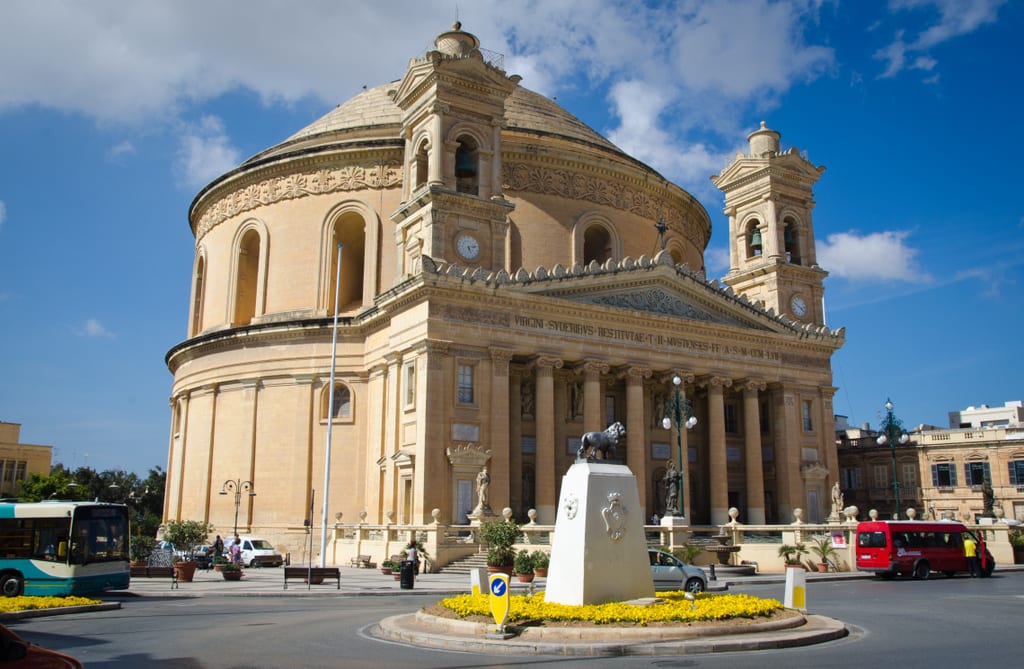
Malta Churches
If anywhere on the planet is more Catholic than the Vatican, it’s Malta.
From giant paintings of the Virgin Mary hanging in Maltese bedrooms to religious festas with saints carried through the streets to incredibly ornate churches courtesy of generous parishioner donations, Malta is a place where life revolves around the Catholic faith.
Malta is home to more than 360 churches in total — an incredible feat when you consider that the island is just 122 square miles.
The Church of St. Paul’s Shipwreck in Valletta is the oldest church in Malta and purportedly holds the wrist bone of St. Paul. St. Mary Magdalene’s Chapel is a tiny, one-room church overlooking the Dingli Cliffs. The church of Xewkija in Gozo has the second-largest church dome in Europe after St. Peter’s Basilica in Rome.
And then there is the Mosta Rotunda — the church that held a miracle.
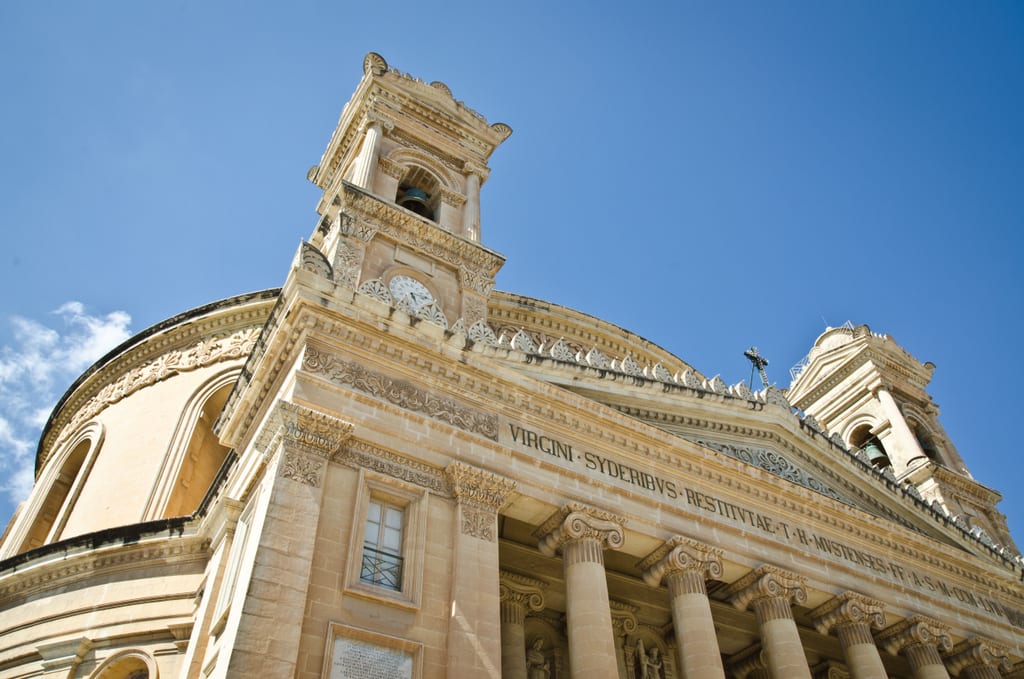
The Mosta Dome Bomb
During World War II, Malta was a strategic outpost for the Allies. Consequently, it was heavily bombed.
The bombing was so extensive that by the end of the war, Malta had become the most-bombed nation on the planet.
(Laos holds this title today, following its bombing during the Vietnam War.)
On April 9, 1942, two German bombs fell on The Church of the Assumption of Our Lady in Mosta, a city in central Malta. Mass was going on at the time, and more than 250 parishioners were in the church.
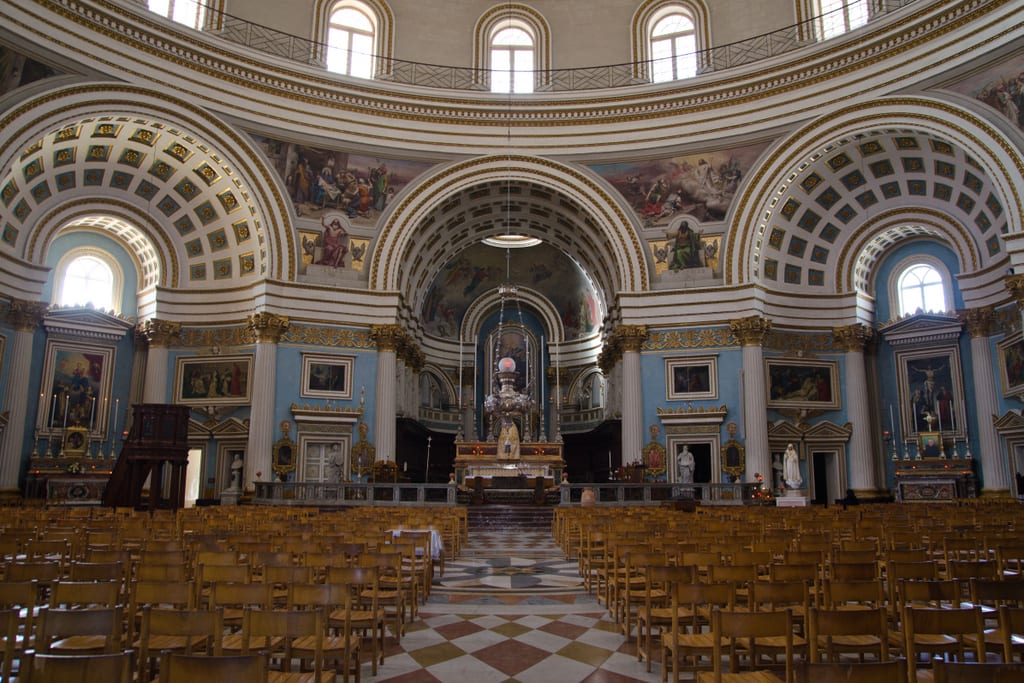
Alarms rang out ahead of time, and while some people left the church, others stayed inside and prayed.
The first bomb pierced the Mosta rotunda, ricocheted, and fell onto the floor of the church. The second cleared the left side of the triangle on top of the church’s facade.
Those bombs had every reason to explode — but neither of them did.
It was hailed as a miracle. Somehow divine intervention prevented the church — and the town — from turning to rubble.
The bombs were promptly defused by the military and later dropped into the sea.
Today, the Mosta Dome is celebrated for its miracle. You’ll find a replica of the bomb that fell through the dome on display in the back of the church.
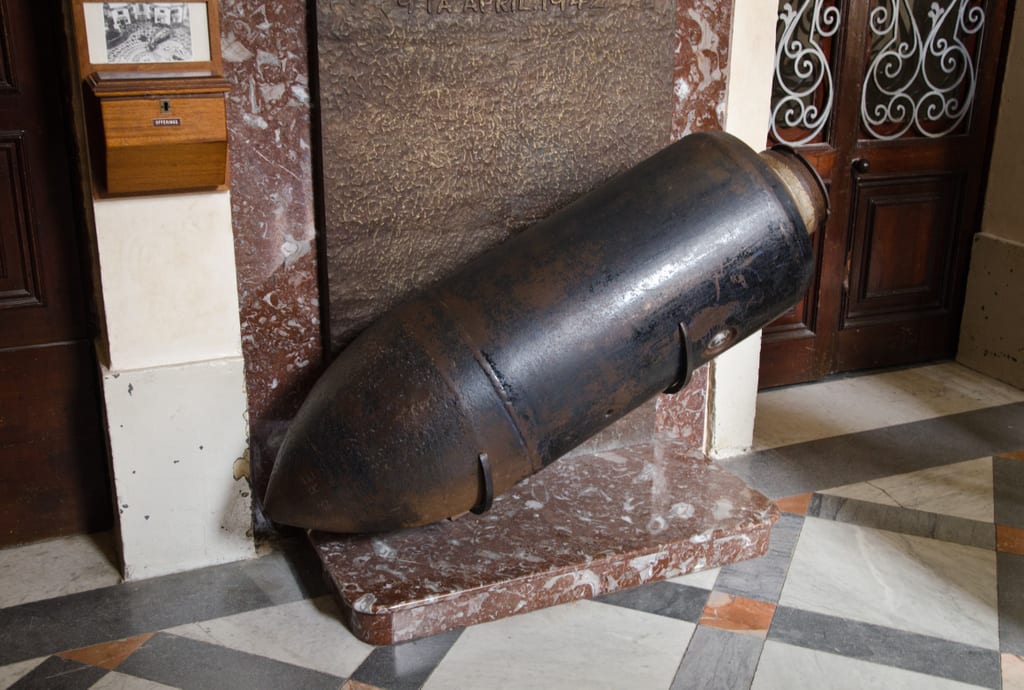
But was it really a miracle that the bomb didn’t explode? There is another story – though I have no idea if there’s any truth to it.
Czechoslovakian workers (under Nazi rule) were recruited as labourers to sustain the German military campaign, and it has been said that some of these workers created the bomb that fell on Mosta Dome. But, as the story goes, the workers were anti-Nazi and instead of filling the bomb with explosives, they filled the metal shell with sand!
Whether or not this was a true miracle, I don’t understand the point of bombing a church — or any house of worship. Seriously, what is the benefit of this?
As horrible as war is to begin with, why would an enemy choose to drop bombs directly on a house of worship filled with innocent people? Why get people in the one place where they feel safe?
It could have been that the bombs were released at the wrong time on the way to a port. Or maybe it wasn’t. Maybe they intended to demoralize the population in the one place that meant the most to them. Believe me, in Malta the churches are sacred.
It’s a question that still resonates today in the age of drone strikes and home-grown terrorism.

How Old is the Mosta Church?
The earliest church on this site was built around 1614. The current Mosta Dome was designed by the architect George Grognet de Vassé who drew his inspiration from the Pantheon in Rome.
The first stone was laid in 1833 and the church was completed in 1860. The new rotunda was so big that the old church was still standing inside and was then dismantled!
The Rotunda has a diameter of 56 meters on the outside and 39 meters on the inside. It’s HUGE. The main façade has six Ionic-style columns and the walls supporting the dome are about 9m thick.
Depending on the source, it has been said that Mosta Rotunda is the 3rd or 4th largest dome in the world.
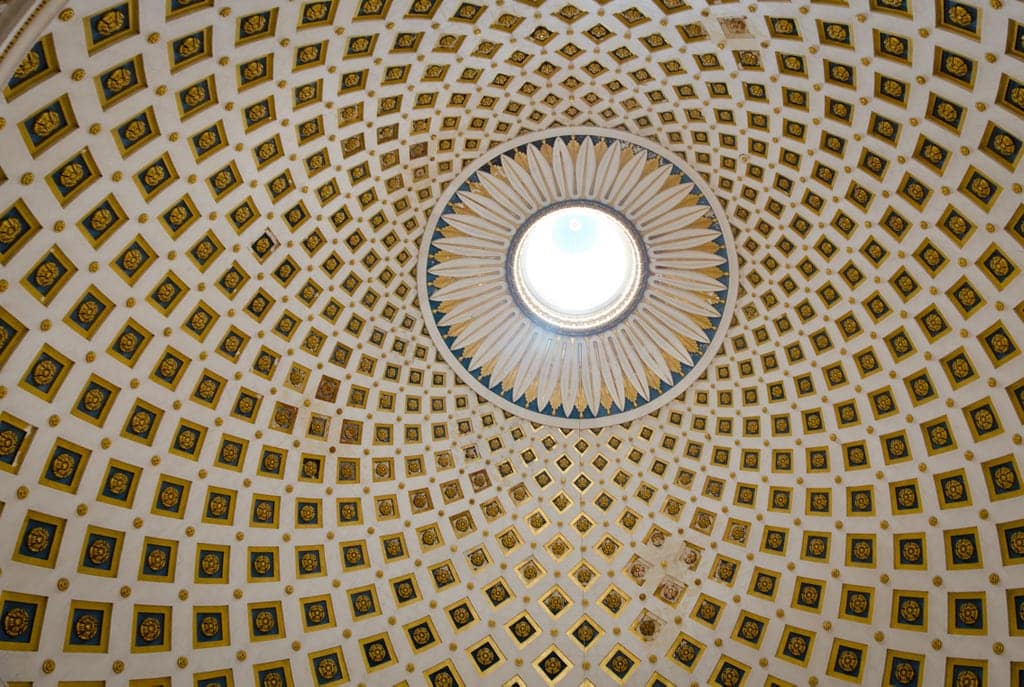
Visiting Mosta Rotunda
Of Malta’s 360+ churches, you won’t find one with a better story than the Mosta Rotunda.
While you are visiting, you can take a flight of stairs up to the roof for a beautiful view. You can also visit the fascinating WWII shelters and learn more about Malta’s crucial role during the war.
The Mosta Rotunda is open to visitors Monday to Friday from 9:30 to 17:30 (5:30pm), Saturday from 9:30 to 16:30 (4:30pm), and Sunday from 12:00 to 16:30 (4:30pm).
Admission fees to the Mosta Rotunda are as follows:
- €2 to visit Mosta Basilica
- €2 to visit World War II Shelter
- €3 to go up on the portico and enter in the inner gallery of the church
- €3 for combo ticket to visit Mosta Basilica and World War II Shelter
- €5 for combo ticket to visit Mosta Basilica, World War II Shelter and go up to the inner gallery of the church
Mosta Malta is easily accessed by bus from Valletta and other cities throughout the island.
If you’ve got a car, Mosta is a good destination to pair with a trip to Mdina and the Dingli Cliffs. Parking can be a challenge and while there are lots near the church, you might be better off taking a space on the street.

More Things to do in Mosta, Malta
Mosta may be a small town on a small island, but there are quite a few interesting places on offer! Here are some fun options:
Guided evening tour of Valletta, Mdina, and Mosta — See the monuments, churches and buildings all lit up at night.
Half-Day Tour of Mosta, Ta’Qali Crafts Village & Mdina — A great cultural offering in Malta.
If you’re a WWII buff, don’t miss the Lascaris War Rooms museum in nearby Valetta.
Take a horseback riding tour through the Maltese countryside.
Visit the Mosta Bridge (or try abseiling or ziplining!).
Take a walk through the Mosta Bride Garden.
This post was brought to you as a result of the Blog Island Malta campaign, created and managed by iambassador in partnership with the Malta Tourism Authority and the support of Air Malta. Adventurous Kate maintains full editorial control of the content published on this site.